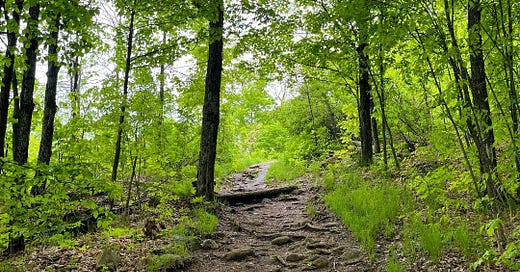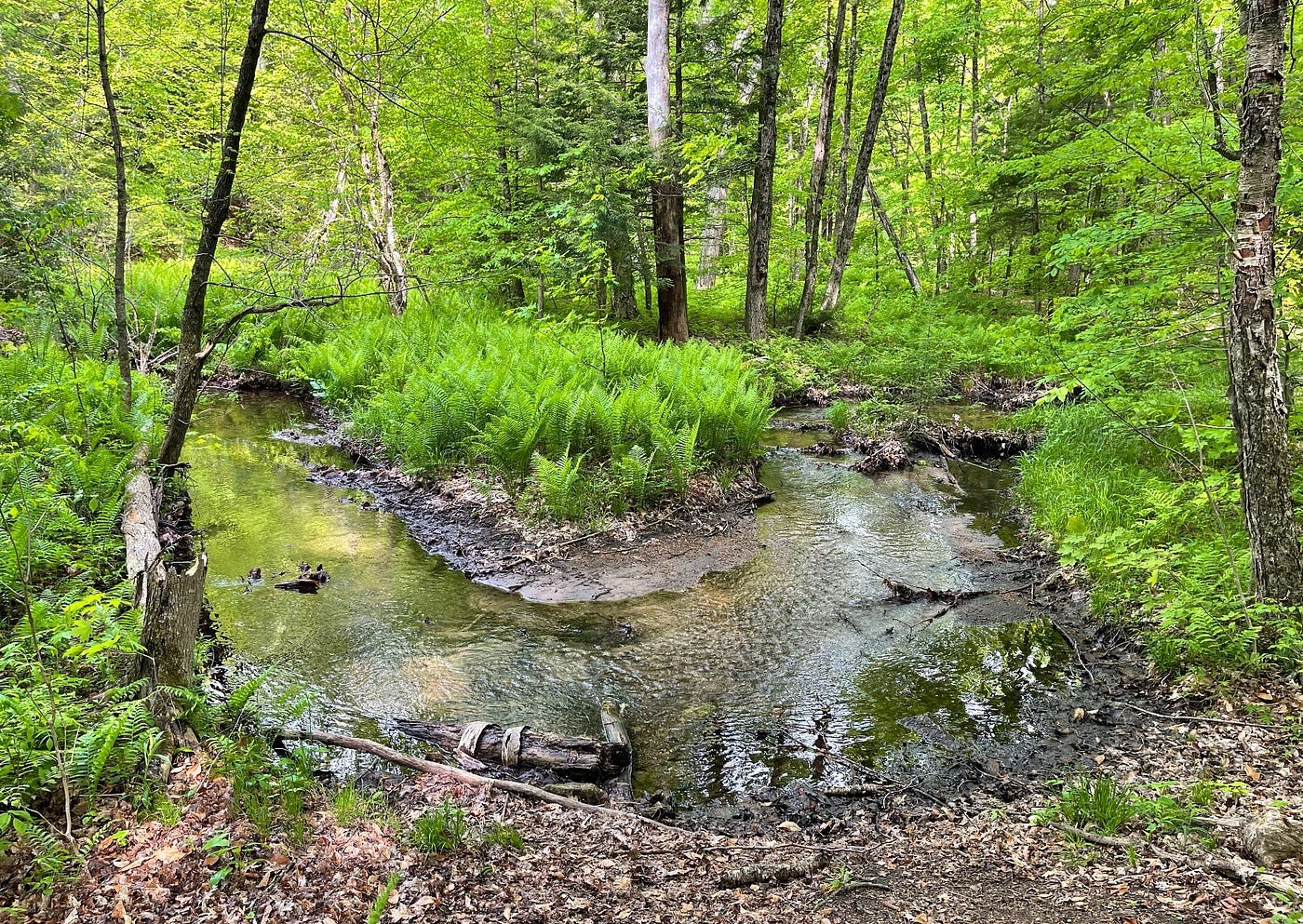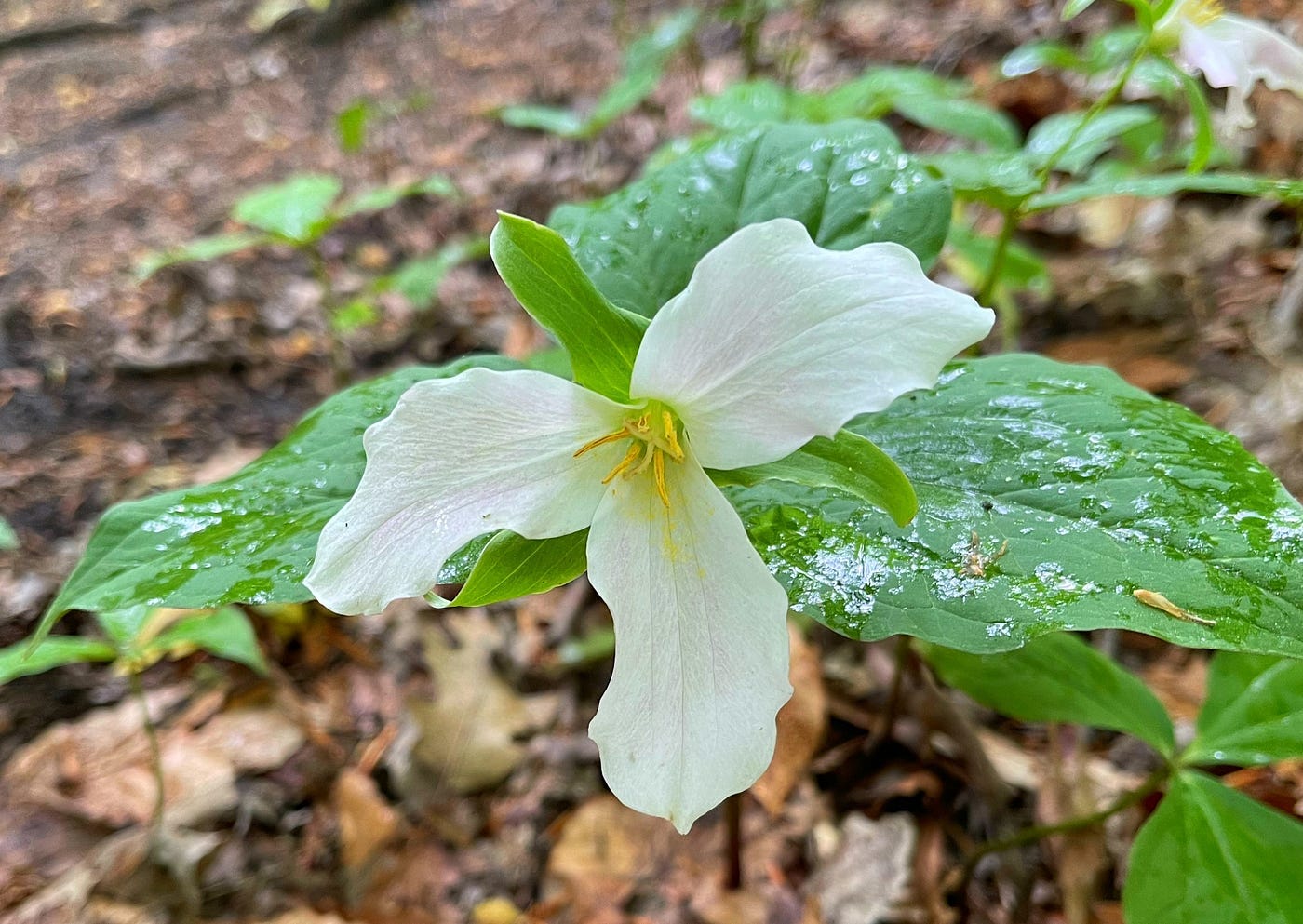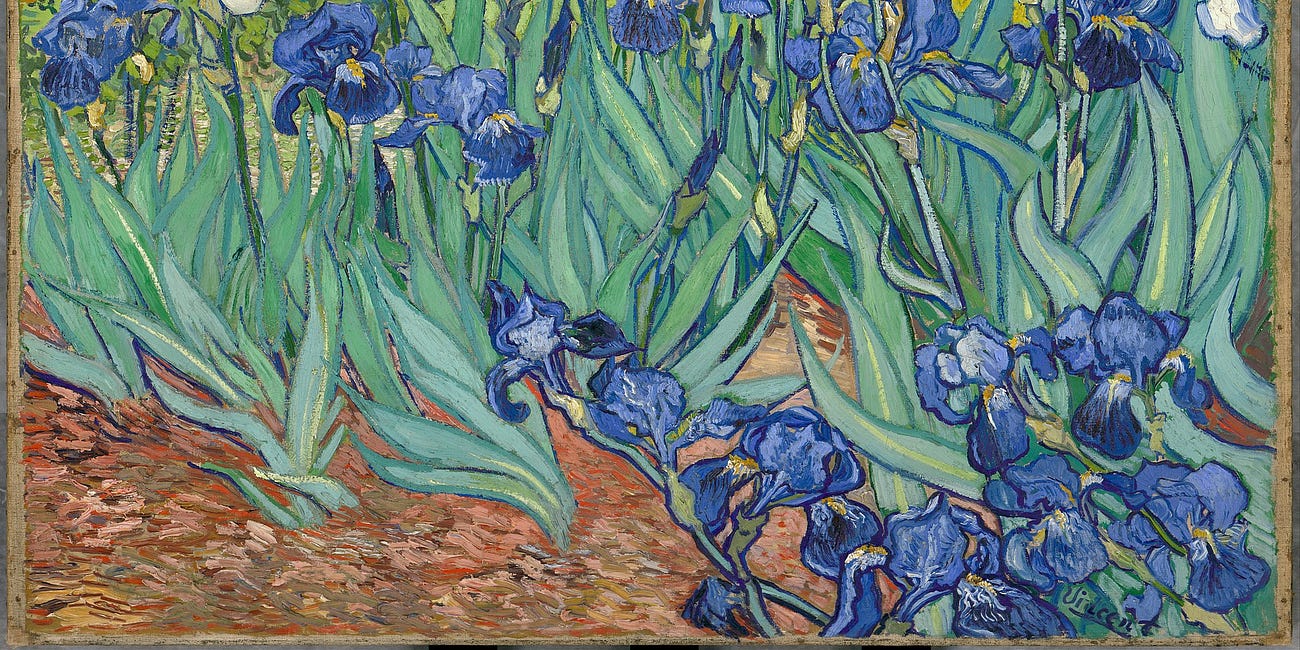How Weekly Walks in Nature Help Me To Find Peace in Times of Climate Change
Searching for white trilliums in Canada
There are better seasons for a walk in Gatineau Park than this one since the mosquitoes are active all day. However, according to a website that predicts their numbers and activity, it was supposed to be a day with a low bug count. So we rolled down our sleeves, shared a variety of mosquito sprays, wipes, and cream, and set off from the parking lot in the middle of this magnificent nature area.
We walk every week, drawn together by a love for nature and a desire to escape the reality of the headlines about international developments with their dire predictions about future living conditions on our planet.
But escaping the reality of climate change is increasingly difficult for anyone who loves the outdoors. Last year, I documented my experiences with heatwaves and forest fires in my videos during my pilgrimage to Santiago de Compostela. This time, the number of mosquitoes alerted us when we entered the humid, lush, green forest.
Mosquito species
There are about 80 mosquito species in Canada, and I have no idea which of those culprits targeted me. Let’s call it the ear-loving bug since it preferred to tighten all my muscles by buzzing into my ear and — as I would realize only later — biting it.
Experts predict climate change will affect mosquito lifecycle and virus transmission patterns, increasing several mosquito species’ range and local abundance. Five years ago, a study showed that in the previous 20 years, the incidence of most mosquito-borne diseases had increased by about 10 percent, mainly due to climate change. Experts fear this trend may lead to epidemics of these diseases.
The forest welcomed us with all its beauty. In a region where winter is a far longer season than elsewhere, spring, summer, and autumn have about half a year left to share between the three of them. So, they each have to rush their seasonal rituals faster than elsewhere.
White trilliums
But nature felt out of sync. The temperature and humidity felt like the tropical summer you wouldn’t expect in Ottawa, but the plants were still in spring mode. Their slow awaking fitted perfectly with our aim to look for white trilliums. The flower is an emblem of the Government of Ontario, which prominently displays a stylized trillium flower in many government publications.
While walking in the forest, spring was recognizable by the fresh, light-colored green of the grass and trees, a shade that slowly darkens during the summer before suddenly changing into a range of golden hues in autumn. “This is the perfect weekly escape from it all,” said one of my friends while ignoring the mosquito that seemed to have a crush on her. I agreed; momentarily, the world beyond nature’s beauty faded.
Gone were my worries about the latest news about last year’s dramatic decline in Antarctic sea ice. Scientists found that in the austral winter of 2023, the sea ice extent was so far below average that a frozen area larger than Alaska was missing. They indicated that such an extreme sea ice loss is extremely unlikely without climate change: it would be a one-in-2,000-year event.
Sea level rise
A separate paper by another team of scientists added to my worries. It explored the impact of strong tides on the Thwaites Glacier in West Antarctica. They discovered that tides push seawater surprisingly far beneath the glacier’s tongue, raising concerns about accelerating melt and sea level rise.
As a Dutchman born below sea level in a country with a history of struggling against the powerful force of the sea, I follow the news about sea level rise with particular interest. If the Thwaites glacier is more vulnerable to ocean warming than previously thought, more coastal communities will be impacted earlier by the rising oceans.
I find it hard to say where I live; I use the phrase “going home” for any direction when crossing the Atlantic, but if there is one place that I consider my true home, it is the island in the Netherlands where my family roots are and where I always keep returning to. In the past hundreds of years, the island has lost a dozen villages to the sea, and this number may increase in the future when sea-level rises, and unpredictable amounts of water flow into the rivers. Fiercer storms will nibble from the coastlines of this delta of some of the largest rivers of Europe.
A small blue butterfly flew just above ground around my feet. I tried to photograph it, but it kept dancing without attempting to escape. Finally, it stopped briefly, folding its wings upwards into a dull gray snippet of paper. I focussed, waiting for the butterfly to show its delicate, bright blue beauty again. But when it took off, I pressed my shutter too late. I gave up. The blue beauty reminded me that enjoying nature’s abundance doesn’t require shooting a picture, an insight from The Deer Hunter, mildly moderated in a photographers-friendly version.
We continued, and I thought of Mackenzie King, the prime minister who once roamed these woods from his well-preserved estate. I stopped to take photos of the pleasant wooden houses and his garden. He considered it a place that showcased the contrast between culture, civilization, and cultivation on the one hand and untamed nature on the other.
In King’s view, each plant and flower was a reward, a divine message, a reflection of beauty and care. He invited his friends and guests to join his daily rituals: a walk in the gardens, an opportunity to admire the scenic landscape, the beautiful light, and the deep blue color of the sky.
As a man of this time, some hundred years ago, Mackenzie King enjoyed nature even more when it was tamed and beautified. So he sowed lawns and planted trees and ornamental gardens. He built bridges, developed new trails, opened vistas, and planted flowers and trees, highlighting nature according to the landscaping principles of the Romantic era.
Follies
To further increase the attractiveness of his getaway in nature, he created “follies,” romantic constructed ruins that were especially popular in England. You still find many of them on both sides of the Atlantic. By now, many of these created ruins have become actual ruins; the ones in Kew Royal Botanic Gardens near London come to mind, or closer to my Ottawa home, the ancient-Greek-inspired pillars in an area close to the river locally known as the Rockeries. So, in that romantic spirit, Mackenzie King created an Arc de Triomphe on his estate.
I had lost my group of friends. They walked on, following one of the trails created by King, which became part of Gatineau Park. I speeded up my walking, passed another one of his follies, hit in vain at an ear-loving hungry mosquito, and found the others on the path the former Prime Minister had worked on since 1929. It’s about a kilometer long and runs along a pleasant stream. I had walked here before and knew this stream would become a rushing waterfall during periods of high water.
Would King have enjoyed our walking group? Like us, he sought refuge in Gatineau Park, away from the political storms that raged in Ottawa in his days. His diaries spoke of wrestling with decisions that shaped a nation. I wonder what he would say now. It’s doubtful that he could have imagined how damaging our impact on nature has become. Would he be as shocked as I am if he would learn in the morning news about the latest Antarctica studies?
I would also like to ask him for his views on the recent study by economists at Harvard, which concluded that an increase of three degrees Celsius will cause “precipitous declines in output, capital, and consumption that exceed 50 percent by 2100”, adding that “These magnitudes are comparable to the economic damage caused by fighting a war domestically and permanently.”
When leaving the cultivated garden on the trail King made a century ago, I pass a sign quoting what he wrote in his diary on Friday, April 15, 1927:
“[We] went to see the waterfalls just at the corner of my property. It [would], all be a beautiful park & some day I will be blessed in having bought it and left it to the nation… keep this as little paradise for the youth & beauty of the capital alike in summer & winter.”
It changed my perspective. Here was a man who had no problem beautifying nature but also sincerely believed that we should preserve nature for the next generations.
With King’s spirit in mind, I followed his trail and caught up with my friends, who stopped their descent to the waterfall. They found what we had been looking for a field of white trilliums.
In 1937, Ontario adopted this flower as its official emblem after a long search for a national flower emblem suitable for placing on the graves of Canadian heroes serving overseas during World War I. A special committee of botanists recommended it to the Ontario Horticultural Association. Botanists had already noticed this slow-growing and vulnerable plant as a Canadian beauty; in 1760, a British botanical treatise called it “the herb True Love of Canada.”
We had found what we had been looking for (as did the mosquitoes) during this memorable walk into nature and history in Gatineau Park, my favorite nature area near Ottawa.
Did you know that clicking on the ❤️ at the bottom or the top of this post will help others discover my publication? You can also share it with others. The best way to support my work and not miss anything is by subscribing to this newsletter.
There is often something extra to enjoy on Patreon:
Or perhaps you liked the article and want to support my writing by buying me a coffee?
I always love to read subscribers’ comments:
A year ago, I wrote this newsletter:
A Journey Among Irises: In the Footsteps of Vincent van Gogh
I am preparing my travels for this summer, so there is less time to write this week. But stay tuned because there will be many stories to tell soon. And for the newer followers of this newsletter: in the summer months, my content is usually lighter, focusing on travel, photography, art, and nature.










Loved reading this story. I felt like one of the walkers looking for the beautiful trillium while enjoying all the sights and sounds of nature and slapping at mosquitoes.
Climate worries were temporarily pushed aside.
Thank you for these lively heartfelt lines from your walks with friends in Ottawa . I gladly Discovered the beautiful white and green flower trillium, Ontarian official emblem, and native to eastern North America.
Interesting was reading about Canada’s PM Mac Kenzie King’s house, tamed or untamed nature and different initiatives.
Less gladly I remembered the mosquito swarms since I also experienced the spraying against them, the beech branches and other tries, but read about them facing many changes and remembered the harmful tiger mosquito that is newly invading the southern parts of Switzerland.
You also reported and reminded us about Antarctic’s dramatic ice decline!!
The Ottawa winters being at least 6 months long rang a bell since I lived up at 1700meters in an alpine village or is also real for those living in Nordic countries or in Arctic regions.
A nice tour.